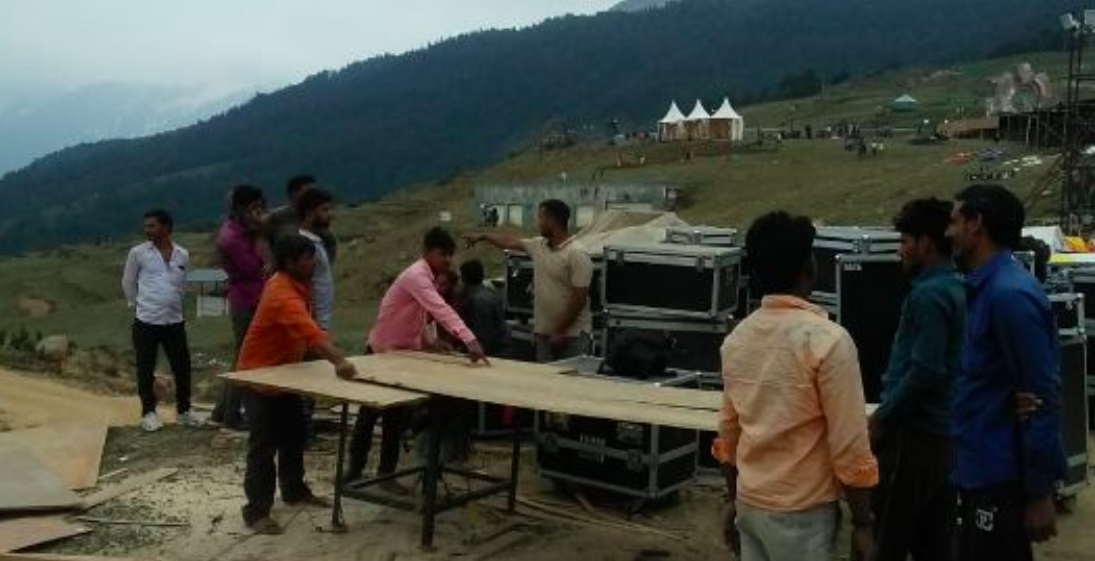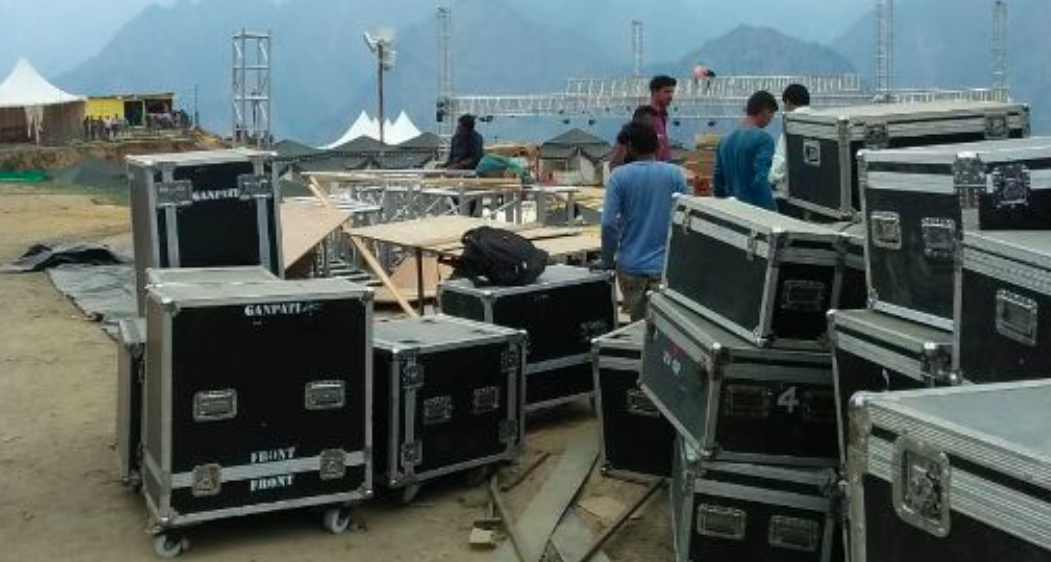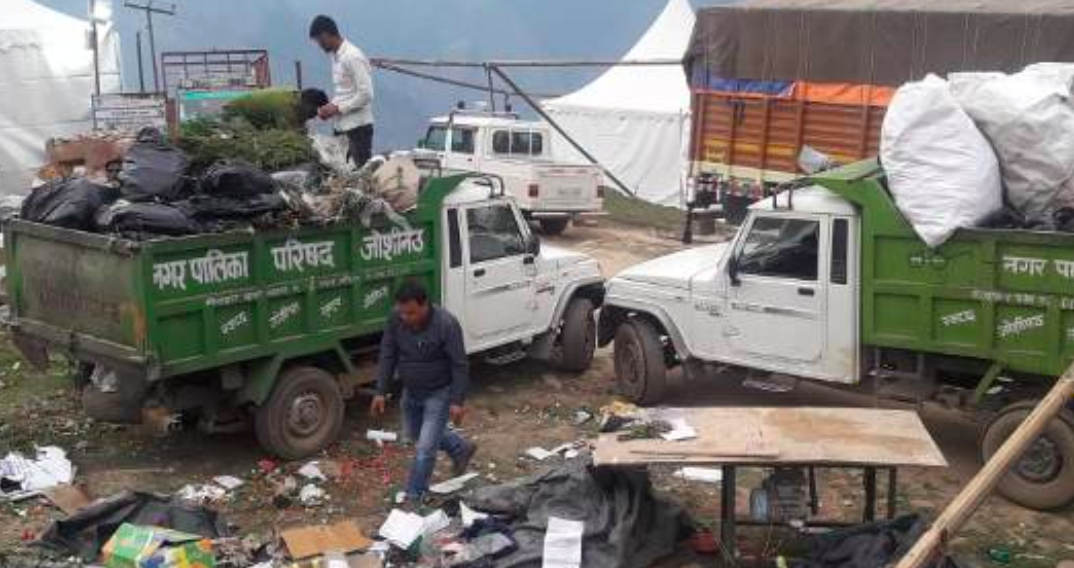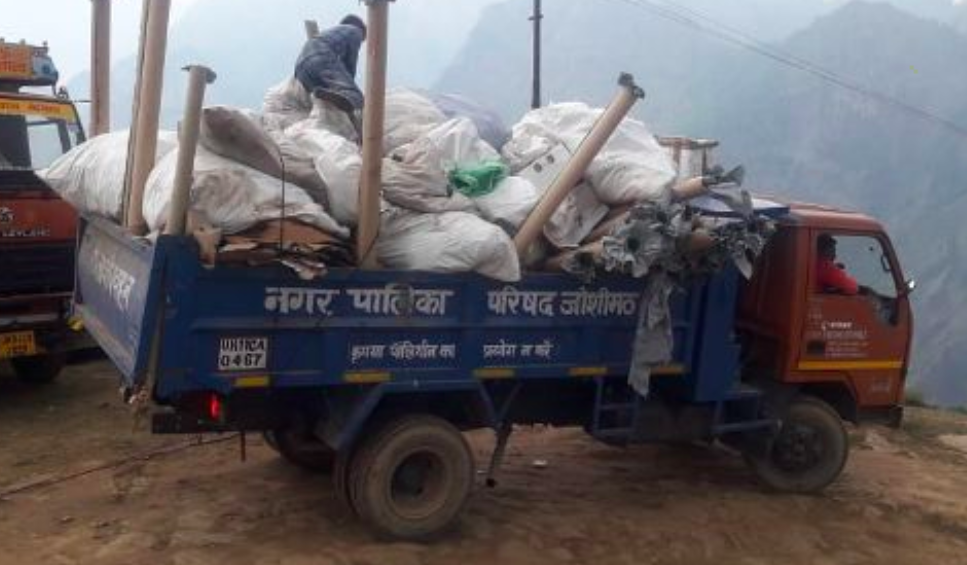Auli can never be viewed as an exotic tourist destination or a wedding destination: Uttarakhand High Court
In its final order on the multimillion-dollar wedding extravaganza in eco-fragile Auli meadow last June, the high court has termed the state government’s decision to allow the mega event of Gupta brothers a ‘grave error’.


Last June, Auli bugyal (meadow) in Chamoli district of Uttarakhand was all over the news as the controversy around a high profile week-long destination wedding of sons of two NRIs, Gupta brothers, pegged to be Rs 200 crore affair with attendees from top industrial houses and the Bollywood, erupted.
The state government ‘rented out’ the ecologically fragile meadow area of the Himalaya terming it an “investment opportunity”. Supporting and promoting this destination wedding in Auli, internationally known for its ski slopes located 2,800-2,900 metres above mean sea level, the state chief minister, Trivendra Singh Rawat, had said: “They [Gupta brothers] could have held this wedding anywhere in the world but they chose Auli… the Gupta family has contributed to turning Auli into a tourist destination by doing the wedding here….”.

However, this reasoning of Rawat and his government has not gone too well with the High Court of Uttarakhand at Nainital. In response to a public interest litigation filed by an environmental lawyer Rakshit Joshi, the court recently ruled on July 27 that the “state government should have never given its permission for holding this large event at Auli”. Gaon Connection has a copy of the order.
The court reprimanded the state government for allowing the wedding extravaganza at the cost of trashing Auli, which is a part of Dhauli Ganga catchment area, and in the periphery of the Nanda Devi Biosphere Reserve.
Disposing of the petition, the court gave four directions to the state government including getting a carrying capacity study of Auli done within four weeks, and an expert committee to identify biodiversity heritage sites across the state.

Restraining the state government for venturing into other activities except skiing in eco-fragile bugyal area, the court said: “Auli should never be a destination for large events, the kind we have just witnessed [Gupta brothers wedding event].”
“The High Court of Uttarakhand has given a landmark judgment which will go a long way in guiding the government for an eco-tourism policy for the state,” Joshi, the petitioner, told Gaon Connection.
“Biodiversity rich areas cannot be employed as exotic tourist destinations. Tourism cannot compromise with sustainable development and hence the court’s direction to carry out carrying capacity of Auli is a welcome step which must be extended to all high altitude hill stations,” he added.
Trashing the Himalaya
A “bugyal” is a soft grass cover on land, high up in the mountains, beyond the tree lines, and is an ecosystem in itself. In Uttarakhand, bugyal means Alpine meadow. It is often used by the local communities as grazing lands for their cattle.
Auli is often referred to as a bugyal. It has snow-covered gentle slopes suitable for skiing during the winters. It is a difficult terrain with a single 14-kilometre motorable road from the nearest town Joshimath, which is open during the summers. For most parts of the year, Auli is not an easily accessible place.
Auli falls in the Dhauli Ganga catchment area of the Nanda Devi Forest Division. Dhauli Ganga is one of the six main tributaries of the river Ganges. The entire catchment area of Dhauli Ganga is a rich source of medicinal and aromatic plants and herbs.
Auli also lies in the periphery of the famous Nanda Devi National Park, a protected area, or the Nanda Devi Biosphere Reserve, a UNESCO world heritage site.
In such a biodiversity-rich and ecologically fragile area, the week-long wedding celebrations of sons of billionaire Gupta brothers, accused of $7 billion South African loot, was held last June as luxurious tents were fixed on the slopes and temporary stages set up, all with the active support of the state government. There were plans to build eight helipads to bring guests to the venue.
Rakshit Joshi, an environmental lawyer based in Nainital, approached the high court on June 14, 2019, questioning the granting of permission for such an event and protection of the state’s eco resources. Since it was already too late, the court did not stop the wedding function, but on June 17-18 ordered the Guptas to deposit Rs 3 crore with the state government as a cost for cleaning up the bugyal post the function. It, however, stopped the construction of helipads.
Post the event, the Uttarakhand State Pollution Control Board surveyed the site and submitted its report in July 2019. It recorded total waste generated by the week-long celebrations to be 32.6 tonnes of which 15.41 tonnes was non-biodegradable including plastics waste.

The pollution control board went on to note that for the event “pits were dug for dumping sewage; these pits were covered with plastic liners and the sewage waste was deposited there; subsequently, sewage was collected from these pits and transported to the sewerage treatment plants.”
The report also said that efforts were being made to segregate non-biodegradable waste into plastic and non-plastic non-biodegradable waste. And that “in the plains, bio-degradable waste is composted within a span of 2 to 3 months, in Auli, which is at a higher altitude, it would take much longer for completion of this process.”
Clearly, the rich managed to trash the Himalaya with impunity leaving it for the local administration to clear up the muck. And the entire exercise was supported by the state government.

Is Auli a ‘bugyal’?
In its defence, the state government said Auli was not a ‘bugyal’ (Alpine meadow). And this was a question the high court tried to address as part of Joshi’s petition.
The word “Bugyal” is derived from the word “bug” or “bugi”, which is the local name of the kind of grass which grows in the high mountains.
As per a 2005 study by G S Rawat, over 24 per cent geographical area of Uttarakhand comes under the alpine zone. But, this entire area is not ‘bugyal’ as many parts of the alpine zone are permanently under snow cover, and some are rocky, broken, and unstable slopes, which do not qualify as quality meadows. Only about 50 per cent of the total alpine vegetation in Uttaranchal may be under the category of bugyal. But, the 2005 study, which recorded 82 major bugyals in the state, did not categorise Auli as a ‘bugyal’.
To understand the matter deeper, the high court directed Dehradun-based Wadia Institute of Himalayan Geology, and Almora-based GB Pant National Institute of Himalayan Environment & Sustainable Development to find out if Auli was a bugyal or not.
In its report, the latter said: “Auli area does not fall under “bugyal” as it lies much below the natural treeline in the Western Himalaya. This area can be categorized under ‘forest blank’ where traditionally cattle camping and currently tourism and other recreational activities have been promoted. The slope does not have typical “bugi” species as found in “bugyals”. Instead, it has seedlings and saplings of woody species/trees which, if protected, will lead to forest formation in due course.”
Keeping these facts in mind, the court in its July 27 order noted: “Auli does not qualify as a bugyal”. But, “lies in extreme close proximity to one of the most well known and environmentally sensitive bugyals called Gaurson Bugyal”. Also, Auli falls in the Dhauli Ganga catchment srea of Nanda Devi Forest Division, and lies in the periphery of the famous Nanda Devi National Park.
Hence, even if Auli is not an alpine meadow and may not be a bugyal, “but it is still a sub-Alpine meadow”, ruled the high court.
“Himalaya mountains is one of the main repositories of the biodiversity wealth of the country, and “Auli” lies in a sub-alpine region of Himalayas, in the catchment area of Dhauli Ganga basin… “Auli can never be viewed as an exotic tourist destination or a wedding destination,” it noted in its recent order.
The court also lashed out at the state government for not identifying even a single biodiversity heritage site in the state under Section 37 of the Biological Diversity Act, 2002.
As per the directions of the court, the state government has to now constitute an expert committee within four weeks to examine whether there is a need to identify biodiversity heritage sites in Uttarakhand and carry out the related exercise. A carrying capacity study of Auli has to be conducted to fix its carrying capacity (how many people can the area accommodate without negative impacts on the surrounding environment) in three months.
“The Court has categorically held that sub-alpine meadows are as significant as alpine meadows or bugyals. The government has also been directed to identify biological heritage sites in Uttarakhand, which will help in the preservation of Himalayas and sensitizing about the unique ecosystem of hills,” said Joshi.
The petition now stands disposed.

